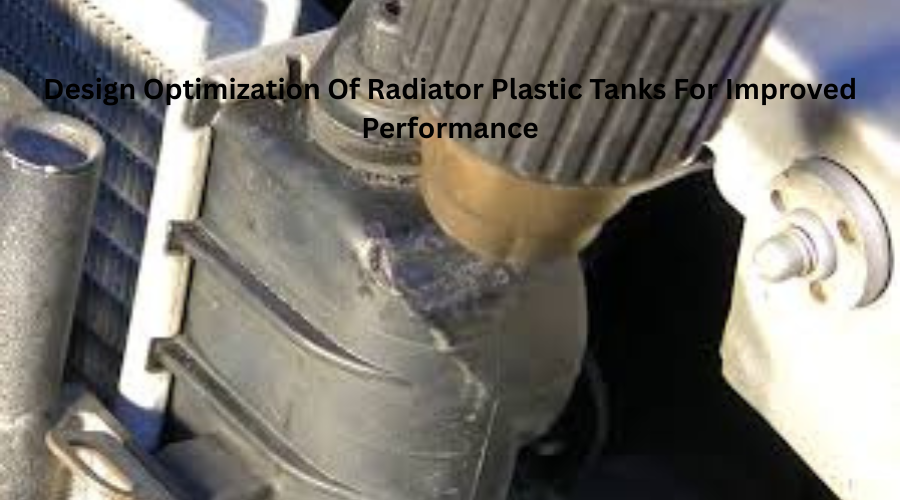What Type Of Plastic Is Used For Radiator Tanks?
- linghangtechnology
- Mar 14
- 3 min read

When it comes to automotive cooling systems, radiator tanks play a crucial role in preserving optimal engine temperature. These tanks are commonly made of plastic, offering durability, cost-effectiveness, and resistance to corrosion. If you're dealing with bulk orders, you may come across the term Wholesale auto radiator plastic tank , which indicates mass production and distribution of these essential components. But what type of plastic is used in radiator tanks, and why? Let's dive deep into the materials that make up these essential parts of a vehicle's cooling system.
Why Are Radiator Tanks Made of Plastic?
Traditionally, radiators were made of brass and copper, but with technological advancements, manufacturers started incorporating plastic tanks attached to aluminum cores. The shift from metal to plastic wasn't just a random change; it was driven by multiple benefits:
Lightweight Construction – Plastic is significantly lighter than metal, reducing the total mass of the vehicle and enhancing fuel economy.
Cost-Effective Production – Manufacturing plastic tanks is more affordable compared to metal tanks, making them a preferred choice in modern automobiles.
Corrosion Resistance – Unlike metal, plastic doesn't rust or corrode, enhancing the lifespan of the radiator.
Improved Flexibility – Plastic materials can better absorb vibrations, reducing the likelihood of cracks and leaks.
Common Types of Plastic Used in Radiator Tanks
Manufacturers use high-performance thermoplastics for radiator tanks because they offer heat resistance, durability, and strength. Here are the most commonly used plastics:
1. Polyamide (PA) – Nylon 6 and Nylon 6/6
Polyamide (PA), commonly known as Nylon 6 and Nylon 6/6, is one of the most widely used plastics for radiator tanks. It offers excellent heat resistance, mechanical strength, and chemical resistance. Some of the reasons why Nylon 6 and Nylon 6/6 are preferred include:
High-temperature tolerance (up to 230°F or 110°C)
Superior impact resistance to withstand thermal expansion and contraction
Resistant to antifreeze, coolant, and engine fluids
To further enhance its properties, glass fibers are often added to Nylon, making it more durable and stable under extreme conditions.
2. Polyphenylene Sulfide (PPS)
Polyphenylene sulfide (PPS) is another high-performance plastic used in some high-end radiator tanks. It offers:
Exceptional thermal stability, withstanding temperatures up to 392°F (200°C)
Superior chemical resistance, preventing degradation from coolant and engine fluids
Minimal moisture absorption, making it ideal for long-term performance
Though PPS is an excellent choice, it is more expensive than Nylon, which is why it is used in specialized applications.

3. Polypropylene (PP)
While Polypropylene (PP) is not as common as Nylon or PPS in radiator tanks, it is sometimes used in lower-end or aftermarket radiators. PP is known for:
Good chemical resistance
Low cost
Decent impact strength
However, it lacks the high-temperature resistance of Nylon or PPS, which is why it is less favored for critical applications.
How Are Plastic Radiator Tanks Manufactured?
The process of manufacturing radiator tanks involves several key steps:
Material Selection – The right type of thermoplastic is chosen based on performance requirements.
Injection Molding – The plastic is heated until liquefied and injected into molds that shape the radiator tanks.
Reinforcement with Glass Fibers – Many radiator tanks have glass fiber reinforcement to enhance strength and durability.
Quality Testing – The tanks are subjected to pressure tests, heat resistance checks, and chemical compatibility tests before reaching the market.
Pros and Cons of Using Plastic for Radiator Tanks
Pros:
Cost-effective compared to metal radiators
Lightweight, improving vehicle efficiency
Corrosion-resistant, ensuring longevity
Easier to manufacture and replace
Cons:
Less heat-conductive than metal
May degrade over time due to exposure to extreme temperatures
Not as durable as metal in extreme conditions
Conclusion
Choosing the right plastic for radiator tanks is essential for vehicle efficiency, durability, and performance. Polypropylene (PP) are the majorly common used materials due to their high-temperature resistance, durability, and chemical resistance. Other plastics like PPS and PP are used in specialized or lower-cost applications. By understanding the properties of these materials, manufacturers can produce radiator tanks that meet the rigorous demands of automotive cooling systems.
FAQs
Q1: Can plastic radiator tanks handle extreme heat?
Yes, plastics like Nylon 6/6 and PPS can be scorch-proof, making them suitable for radiator tanks.
Q2: How long do plastic radiator tanks last?
With proper maintenance, a plastic radiator tank can last 5 to 10 years, based on use and environmental conditions.
Q3: Can I repair a cracked plastic radiator tank?
Yes, plastic welding or epoxy sealants can temporarily fix minor cracks, but replacing the tank is the best long-term solution.
Q4: Are plastic radiator tanks better than metal ones?
Plastic tanks are lighter, cheaper, and corrosion-resistant, but metal tanks offer better heat dissipation and durability.
Understanding these materials ensures that both manufacturers and vehicle owners make the best choices for their cooling systems. Always opt for high-quality radiator tanks to maintain your vehicle's performance and longevity.






Comments